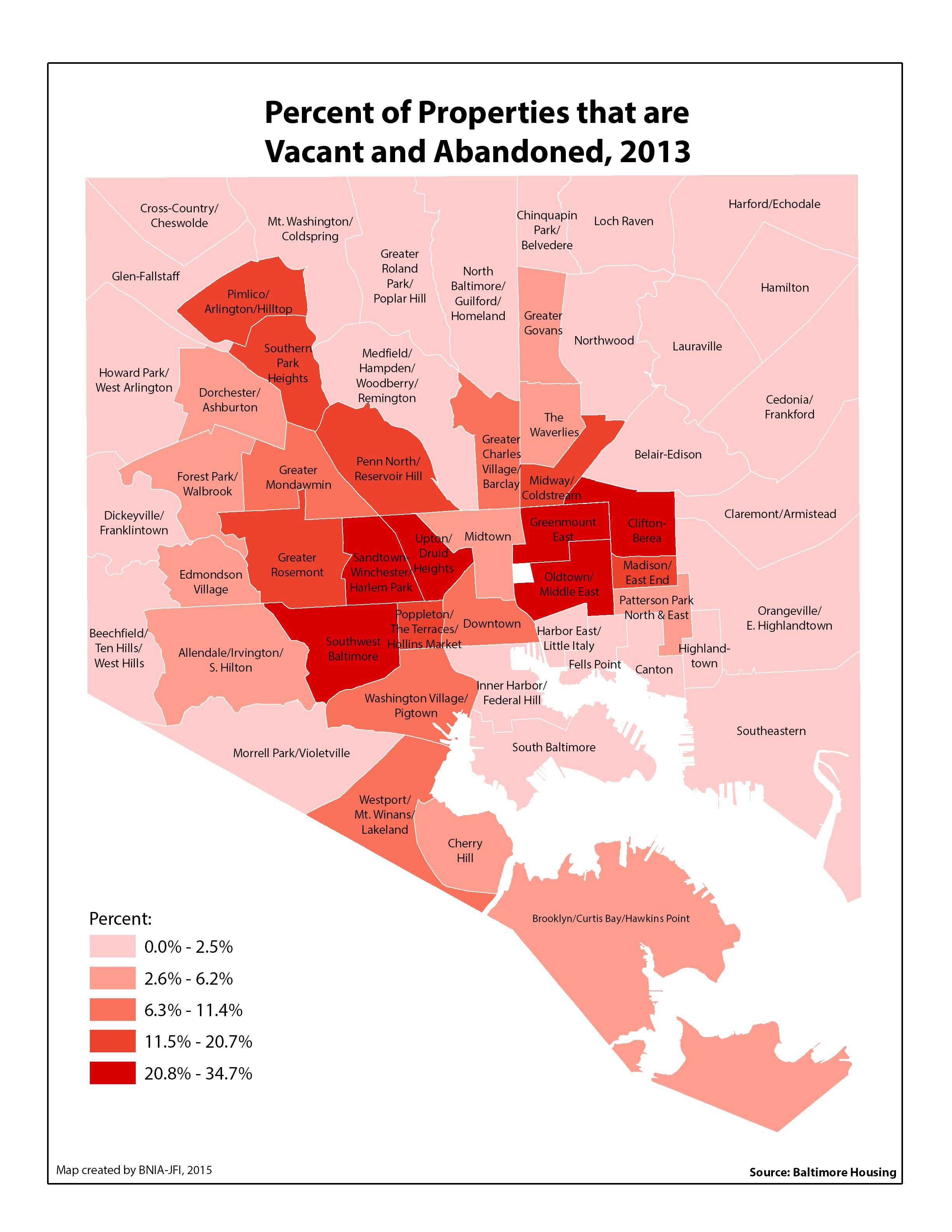The Sept. 14 edition of the University of Baltimore class, “Divided Baltimore: How Did We Get Here? Where Do We Go?,” featured three guest lecturers focused on the topic of segregation and the various forms it takes across Baltimore communities.
Guest lecturers and their topics included:
- Seema Iyer, associate director of UB’s Jacob France Institute, director of its Baltimore Neighborhood Indicators Alliance and research assistant professor in the University’s Merrick School of Business, speaking on “Mapping Justice and Equity in Baltmore”;
- Lawrence Lanahan, freelance journalist and producer of WYPR’s “The Lines Between Us” series, on “The Lines Between Us”;
- Siobhan Hagan, audiovisual archivist in the University’s Langsdale Library, on relevant materials in the library’s Special Collections.
See Presentation, Abstract and Video from the class:
Abstract: The Baltimore Neighborhood Indicators Alliance-Jacob France Institute (BNIA-JFI) at the University of Baltimore has been analyzing and disseminating community based indicators for Baltimore’s neighborhoods since 2000. The indicators provide insight into and ongoing monitoring of the overall trends in communities by tracking key measures that reflect quality of life. In April 2015, BNIA-JFI issued the 13th edition of Vital Signs, a compendium of data, maps and charts of over 100 indicators for all of Baltimore’s neighborhoods. This latest edition continued to point to disparities across neighborhoods on educational, economic and social outcomes. For communities like Sandtown-Winchester/Harlem Park, the disparities have a compounding effect of negative indicators such as low employment, high housing vacancy, and high incarceration.While geography need not be one’s destiny, a growing body of research shows that neighborhood context significantly impacts the ability of residents to lead a healthy life. The Vital Signs data point to certain conditions that are necessary, if not sufficient, for neighborhood success. Using statistical correlations and data visualizations, the interrelationships between indicators and the spatial patterns across neighborhoods show that focusing two areas, quality housing and accessibility to work, will help eliminate the existence of distressed communities and move Baltimore to a more just and equitable city for all.
Watch the video of the lecture.
Learn more about the University of Baltimore’s “Divided Baltimore” series and follow it on the blog and on Twitter



